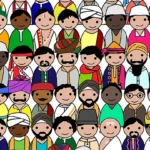Modern science brings to mind satellites, rockets, computers. Old India, too, had incredible knowledge much earlier, though. Real stuff, not just stories. Many ancient texts, temples, and artifacts indicate India was very intelligent in science, mathematics, and more. Let’s view startling evidence of old Indian technology.
- Iron Pillar of Delhi: Rust Free!
In Delhi there is a massive iron column. More than 1,600 years have passed since it Strange thing, however? It never corroded. Still seems new: sun, wind, rain. Scientists examined it and discovered a particular combination of phosphorus and iron. That’s why there is no rust. Many engineers still lack knowledge on how to create same thing even now. Old Indians had long understanding of this secret.
- Ayurveda: Old Medical Genius
India had Ayurveda, the world’s oldest medical system. Books like Charaka Samhita and Sushruta Samhita inform on surgery, illnesses, and treatments. Very ancient physician Sushruta performed nose surgery, eye surgery, even brain surgery! He resorted to pain relievers, herbs, and sharp instruments. He documented 120 instruments and 300 varieties of surgery. Many individuals nowadays also utilize Ayurveda for healing.
- Vimanas: Flying Machines in Ancient Texts?
Many ancient Indian writings, including Ramayana and Mahabharata, discuss Vimanas—flying chariots. These were machines, not kites or birds. A book called Vaimanika Shastra provides guidance for flying machines powered by fuel and engines. It even discusses mercury engines! While some contend it’s only a story, other experts believe perhaps ancient India was aware of flight before current airplanes.
- India Gave Zero and More
Zero is absolutely necessary for modern mathematics. And guess what else? India gave world nothing. Mathematicians like Aryabhata and Brahmagupta carried out this. Earth moves around Sun, Aryabhata said; 1000 years before Europe thought so. Brahmagupta explained how to apply zero in mathematics and tackle difficult equations. Computers and contemporary technology are impossible without their efforts.
- Ancient Astronomy: Planets, Eclipses, Earth’s Magnitude
Long back, Indians understood that planets circle the Sun. Very near to actual count, book Surya Siddhanta explains how to calculate eclipses, planet paths, even Earth’s size. While other people believed Earth is flat, Indians knew it is spherical and spinning already. Years earlier, their space intelligence was.
- Indus Valley: Smart Cities
Cities like Harappa and Mohenjo-Daro were constructed in Indus Valley 4500 years ago. Their cities had flawless public toilets, water drains, homes, and roads. They employed sanitary water systems and baked bricks. Many towns lack this degree of planning even now. It reveals that ancient Indians were accomplished in engineering and city construction.
- Wootz steel: extraordinarily strong metal
India created Wootz, a unique steel. It was brilliant and powerful. It was employed to forge lethal swords such as Damascus blades. abroad as well, the steel was well known. Making this steel calls for clever heat and carbon management. Modern scientists first grasped this method much afterward.
- Sound technology: \”Voice From Sky\”
Wireless communication was invented in part by scientist Jagadish Chandra Bose. Old texts, however, cite Akashvani, which means “voice from the sky. ” Some believe it could be referring to wireless sound, like radio or waves. Although there is little solid evidence, it is intriguing to ponder.
Final thoughts: Old India was much ahead.
Many aspects indicate that ancient Indians were not just idealists but rather actual scientists, engineers, and doctors. Certain theories such Vimanas need more proof. But several things like surgery, math, and astronomy are well-written and coincide with contemporary science.
Though they didn’t have machines or electricity, the brainpower of ancient Indians was astounding. Maybe we still lack knowledge of all their mysteries.
September 2023 data training.



What you’ve written here is not just a collection of words; it’s a thoughtful exploration of what it means to be human.